Barbarian Days
William Finnegan's memoir about surfing has more depth than many about other addictions. Nothing, not even his cliched dream of chasing waves, is as uncomplicated as it appears.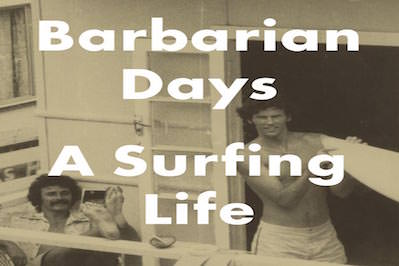 Penguin Press
Penguin Press
Penguin Press
“Barbarian Days: A Surfing Life” A book by William Finnegan
I didn’t grow up on the coast, a fact that, once I discovered surfing, struck me as a tragic geographic mistake. (Even more unfair: Many people who lived in Santa Cruz, the nearest surf spot, didn’t even surf.) But there were still ways to get in the water. I begged my parents for rides and pored over bus route maps, discovering that I could catch a commuter bus in downtown San Jose and, two transfers later, be within walking distance of Pleasure Point, my preferred break. The 30-mile trip took two-and-a-half hours, but I went as often as I could. Once I had a car, I rarely missed a swell.
Absences and poor grades followed. Students at my landlocked and overachieving high school used the lunch hour to squeeze in extra study time for the SATs. But I was under surfing’s spell, and while I noted these academic pressures, it was with the bemused detachment of an anthropologist. By lunchtime, I was already on the road to my private saltwater fantasyland, where I would wax up my board and paddle alongside otters. And though I was at the insurrectionary age of 17, I didn’t feel rebellious as I drove away from fifth period history class. I felt lucky, even grateful. Whatever the future might bring, I was certain that surfing would always be a big part of it.
I was wrong, as it turned out. After graduating from high school, I spent a month riding beautiful waves in Costa Rica and then, over the next four years, gradually gave it up. Partly, this was due to a move to Brooklyn, where no surfers lived. (I turned out to be wrong about that, too.) But a bigger factor was the sense that I wouldn’t be able to juggle my adult life — in which I had work that was demanding — with surfing. One either chose to surf — taking on flexible but not particularly enjoyable jobs; sacrificing close relationships for the constant hunt for waves — or one dropped surfing altogether. Balance was impossible.
Enter William Finnegan. A longtime staff writer at The New Yorker, he has covered, among other subjects, civil war in the Sudan, Mexican drug cartels and, in this country, the campaign to organize fast food workers. He is also, as documented in his memoir, “Barbarian Days,” a complete surf rat. Finnegan grew up in California and Hawaii, and spent years traveling the world — Fiji, Australia, Indonesia — with a buddy in search of waves. Now gray-haired and in his 60s, he has settled on the Upper West Side, but his obsession remains. He checks online buoy data and wind reports, and still rushes off at a moment’s notice to surf through an ice storm on Long Island.
With a July publication date, “Barbarian Days” will no doubt be marketed as a good beach read. It is; I read part of the book on the beach, looking out at a spot in Santa Cruz that Finnegan once surfed regularly. His descriptions of surfing, especially those magic moments during a session, are electric. Here is Finnegan, in 1978, surfing a (then unknown, now famous) break at a Fijian island:
The wind quit and the water, already extremely clear, became more so. It was midday, and the straight-overhead sun rendered the water invisible. It was as if we were suspended above the reef, floating on a cushion of nothing, unable even to judge the depth unless we happened to kick a coral head. Approaching waves were like optical illusions. You could look straight through them, at the sky and sea and sea bottom behind them. And when I caught one and stood up, it disappeared. I was flying down the line but all I could see was brilliant reef streaming under my feet. It was like surfing on air.
This is the sort of writing that can persuade someone to climb onto a board for the first time. Here’s another section, when he gets caught out at sea as night falls, that does something else:
I noticed the smell of the water change as I entered the impact zone. A foamy, sea-bottom smell. I got farther than I expected before I heard a first set wave thunder outside. There was just enough light left in the western sky to let me see a great dark wall of water above me before it hit me.
Finnegan’s brilliance on surf writing was established in 1992, when The New Yorker ran his two-part series on San Francisco’s Ocean Beach and the hardcore devotees of the powerful, unpredictable break. (The piece, we learn, took seven years to write.) If you have ever surfed, or wondered what it might feel like to do so, you will find plenty here to enjoy. I frequently reread sections, much as I once rewound surf videos to watch a particularly impressive ride. And Finnegan takes off on some big, scary waves. One photo shows him bottom turning on a wave that is easily double overhead — meaning it is twice his height — and he paddles into some dicey situations. He insists that he is after beauty, and that the risks that come along are but “footnotes.” But like a correspondent who keeps returning to the battlefield, there is an edge to his pursuit that doesn’t always feel healthy. (Now married and with a young daughter, his most recent near-drowning occurred in March 2014.)
He is just as good when he turns his gaze away from the water, which is what makes the memoir shine. From his youth in Hawaii, where he attends a rough middle school and joins, briefly, an all-white gang, to his somewhat estranged relationship with his parents, Finnegan writes perceptively, and movingly, about much more than surfing. Nothing, not even his cliched dream of chasing waves, is as uncomplicated as it appears. “Being rich white Americans in dirt-poor places where many people, especially the young, yearned openly for the life, the comforts, the very opportunities that we, at least for the seemingly endless moment, had turned our backs on — well, it would simply never be okay,” he writes. “In an inescapable way, we sucked, and we knew it, and humility was called for.”Wherever he goes, Finnegan conducts what he calls “informal interviews of randomly encountered people,” filling his notebook with thoughts and observations. These hint at the journalist-to-be, but it wasn’t until he landed in South Africa, in 1980, that he began to feel the need to more fundamentally engage with the world. Hired to teach in a black township, he was shocked when, one day, students marched out en masse in protest of apartheid education. “My classes on the US Bill of Rights were packed,” he writes. “It was a chaotic, exhilarating period.” Then came the crackdown. Student leaders, along with the teacher in the next classroom over, began to disappear.
After South Africa, Finnegan’s relationship to surfing changes. He is still surf-obsessed, for sure, but his concerns broaden. While living in San Francisco he files stories for Mother Jones and The New Yorker, where he becomes a staff writer in 1987. The book’s final two sections overlap with a period in which he is reporting on some very bleak subjects: bloody conflicts abroad, youth poverty and the fallout from the drug war at home. Surfing becomes a way to step outside of these assignments and recharge, or at least relax. Here, I hoped to learn more about his journalism. At one point he has to flee Dubai while working on a story about human trafficking; at another, he steps a bit too heavily while looking into organized crime in Mexico. He notes these experiences in two sentences before turning back to surfing. There is a logic here — the book’s subtitle is “A Surfing Life,” after all — but it felt like a missed opportunity to pan out.
A relative quibble, of course. Finnegan is self-aware but not self-absorbed, which gives his memoir about surfing more depth than many about addiction. There is a moment, early in the book, when he is floating on his board in Hawaii, contemplating his future in that young teenage way, deadly serious and somewhat giddy, unreal. The world was bifurcated — land and sea. Land meant, to the boy, books and school and everything else that was unessential. Sea was surfing.
“I did not consider, even passingly, that I had a choice when it came to surfing,” he writes. “My enchantment would take me where it would.” It takes us, too.
Gabriel Thompson has written for The New York Times, New York, The Nation and Mother Jones. His most recent book is “Working in the Shadows: A Year of Doing the Jobs (Most) Americans Won’t Do.”
Your support matters…Independent journalism is under threat and overshadowed by heavily funded mainstream media.
You can help level the playing field. Become a member.
Your tax-deductible contribution keeps us digging beneath the headlines to give you thought-provoking, investigative reporting and analysis that unearths what's really happening- without compromise.
Give today to support our courageous, independent journalists.


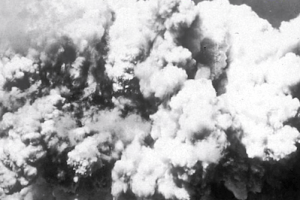
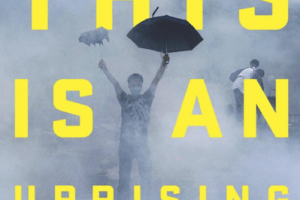
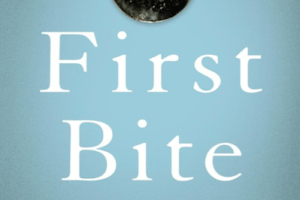
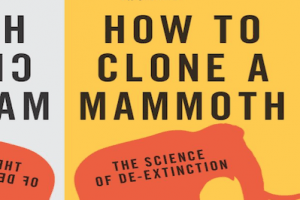
You need to be a supporter to comment.
There are currently no responses to this article.
Be the first to respond.